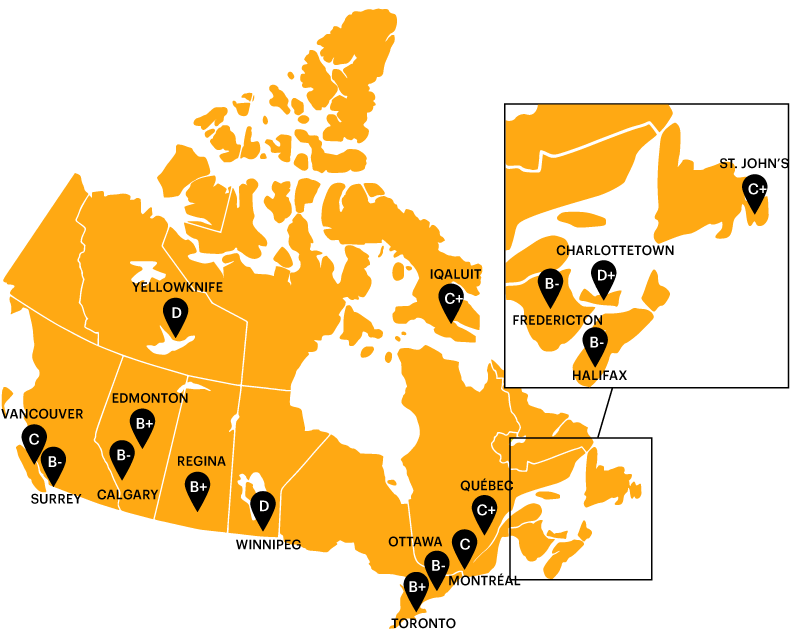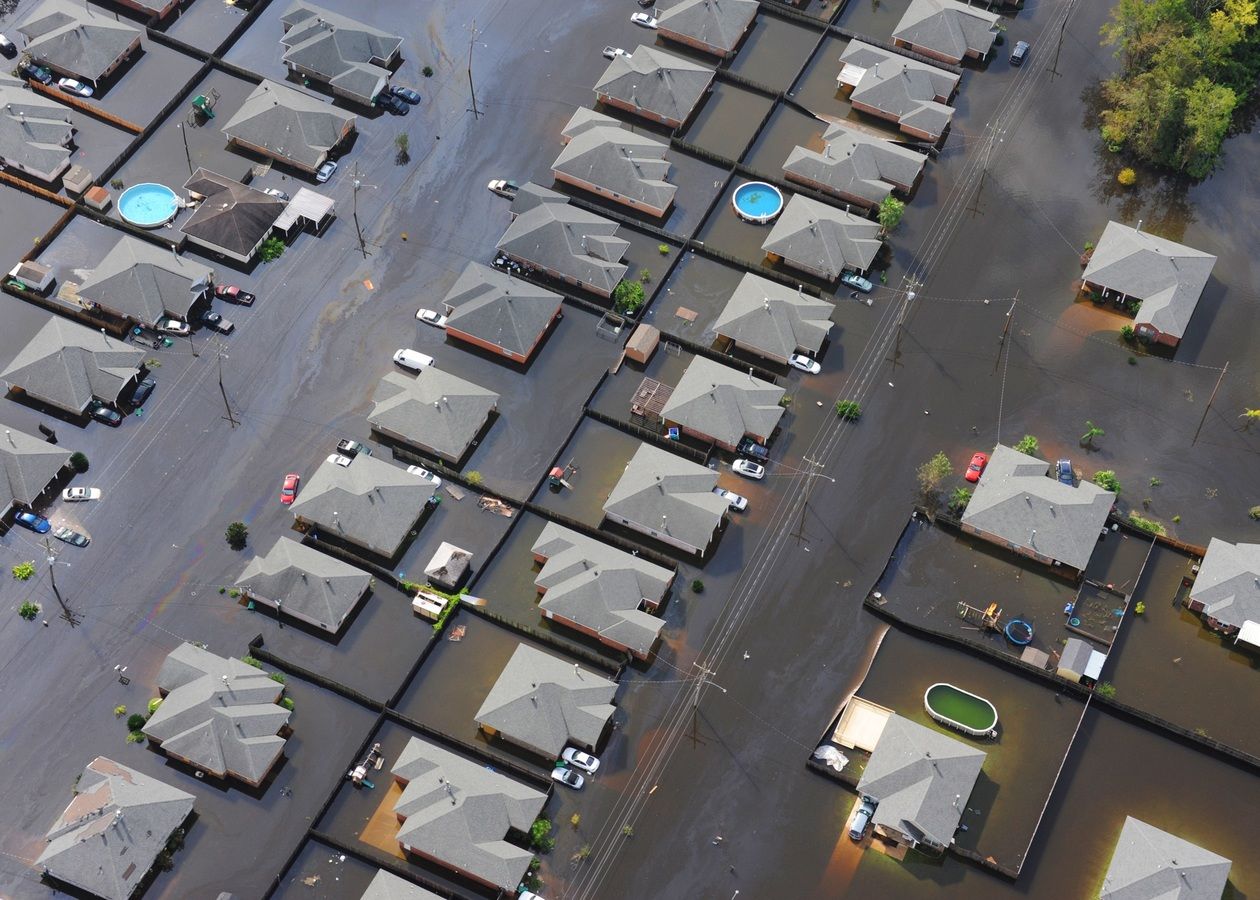Canadian municipalities need to improve the risk exposure of their homes and critical infrastructure, as well as improve public health and safety, says the report Climate Change and the Preparedness of 16 Major Canadian Cities to Limit Flood Risk, produced by the University of Waterloo and the Intact Centre on Climate Adaptation.
Canadian cities need to step up their efforts to mitigate the flood risks associated with increasingly extreme weather, the report says. “Edmonton, Regina and Toronto are already doing a good job of this; others could learn from them,” the researchers point out.
Flood rating of 16 major canadian cities, 2019/20

Source: University of Waterloo
The average grade on flood preparedness for major Canadian cities remains unchanged at C+ since 2015 and “there is considerable margin for improvement in flood preparedness for most of the surveyed jurisdictions,” the report notes.
Not mapping flood zones pays off for cities
Municipalities are currently not incentivized to carry out floodplain mapping. Without mapping, they can plead ignorance and avoid financial and political accountability when flooding occurs, the researchers say. Municipalities without floodplain maps "often find it easier to apply for, and consequently receive, federal recovery funding,” the report adds.
Under provincial flood regulations, municipalities can only limit development in provincially defined risk areas. Even when they have their own floodplain maps that incorporate climate projections, sea level rise and land-use changes, they have no regulatory authority and can only offer advice on flood protection strategies, the researchers continue.
Municipalities need to move more aggressively to prepare for flood risk, and must learn from municipalities that are best prepared to deal with flooding, the researchers say. Preparedness and prompt action are essential to avoid managing disasters on a case-by-case basis.
As climate change and the associated flood risks accentuate, the lack of progress in flood preparedness is unacceptable, the researchers say.
Residential risk mitigation
Of the 16 cities participating in the study, only Edmonton provides its residents with information regarding whether their property is in a flood zone, the report adds. Most other municipalities are content to publish aggregate data on residential areas at risk from river or coastal flooding, and generally ignore urban and stormwater flooding.
Generally, property owners in Canada are not legally obliged to disclose flood information to potential buyers. While some provinces, such as Québec, ask sellers about previous flood damage, only Ontario uses a Seller Property Information Statement that includes a question about the property's current flood exposure. "In short, there is a gap in provincial policy, across Canada, which should be addressed to protect property buyers and reduce the financial and social costs of flooding," the report states.
Critical infrastructure risk mitigation
Flooding could cause “far-reaching societal impacts” if it affects critical infrastructure such as energy, transportation, telecommunications, water supply and wastewater systems.
The researchers say they observed a widespread limitation in municipalities’ efforts to address vulnerabilities in Telecommunications, Food Systems and Financial Services.
Of the 16 cities surveyed, only Edmonton, Regina and Toronto exhibited a strong ability to protect their food supply systems from flooding.
What’s more, cities have reported weak performance in reducing the vulnerability of their populations to chemical releases. Flooding of a refinery, wastewater treatment plant or hospital could result in a dangerous spill, which could lead to contamination of drinking water sources. Such situations would require a prompt coordinated response to protect the health and safety of the public.
Again, only Calgary, Edmonton, Regina and Toronto were well prepared for spills of hazardous materials, the report finds.
Related story: How flood risk resilient is Canada?




